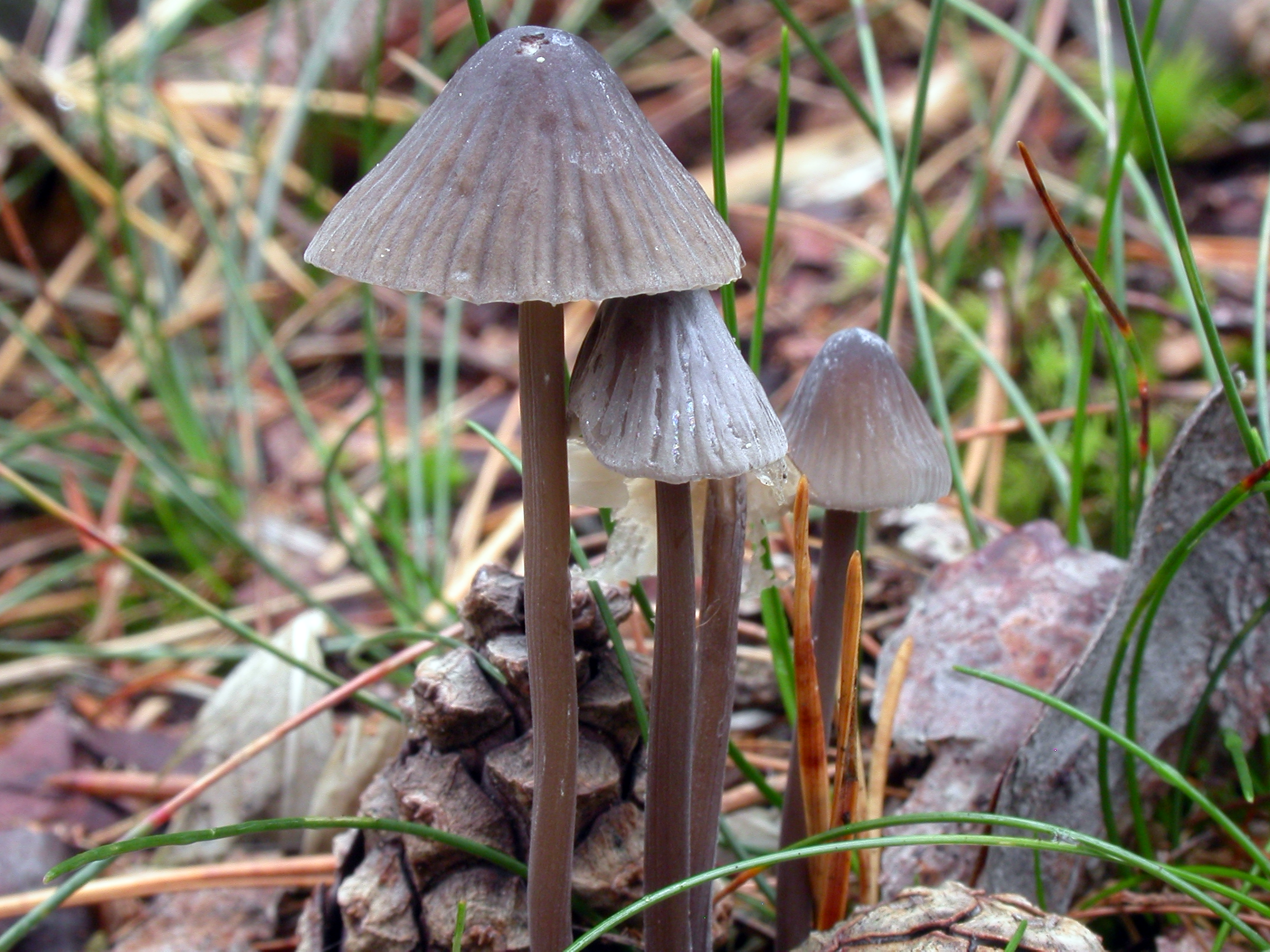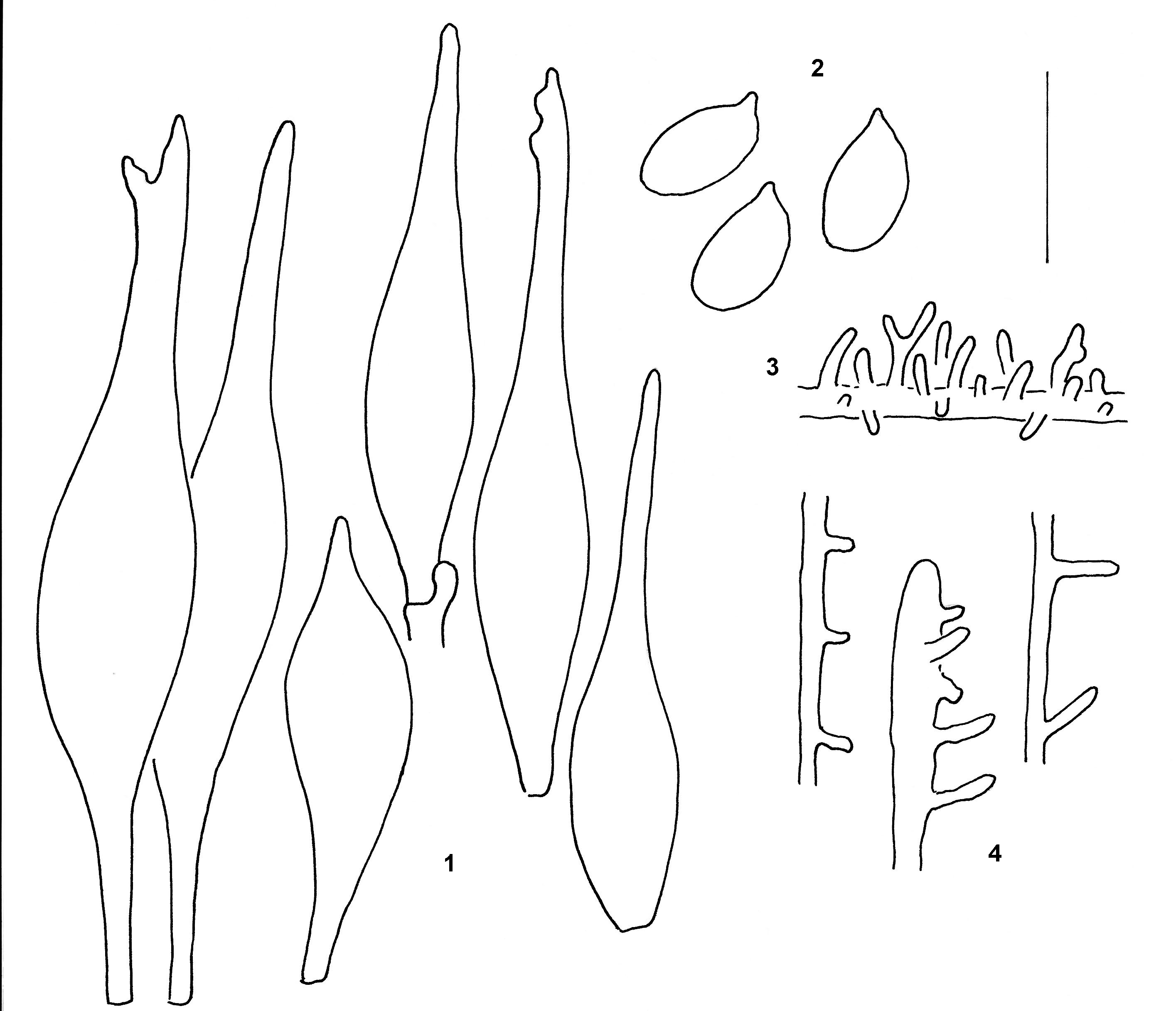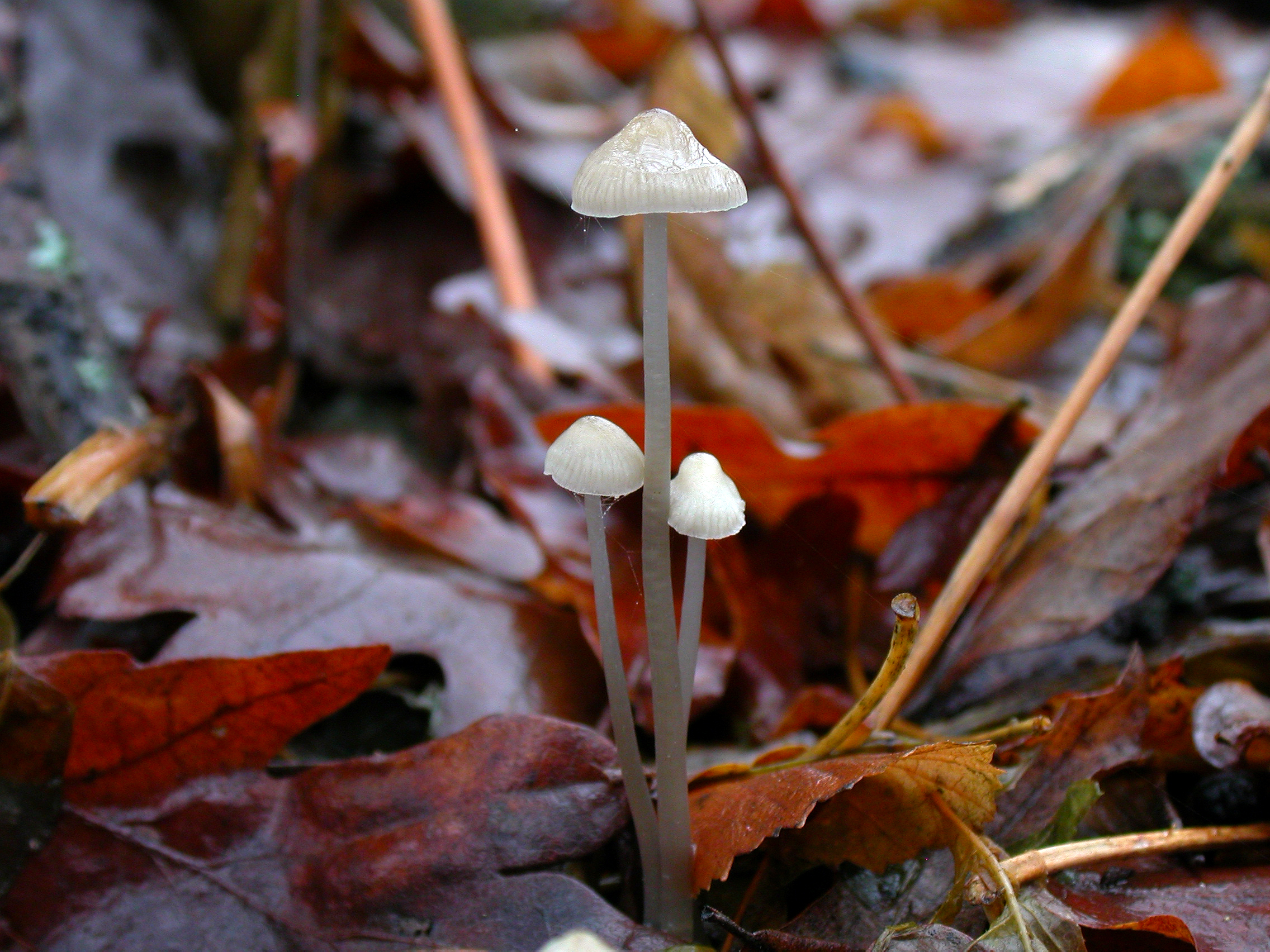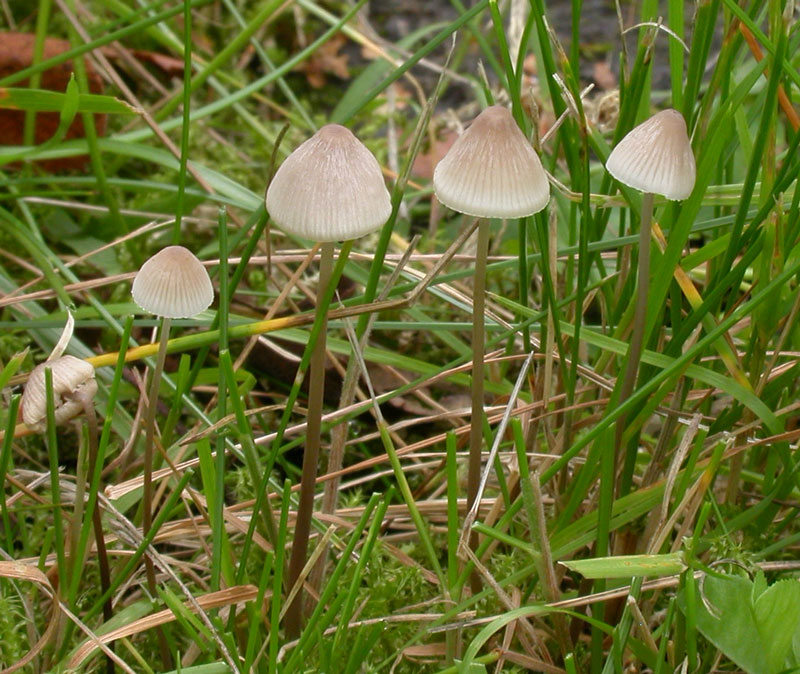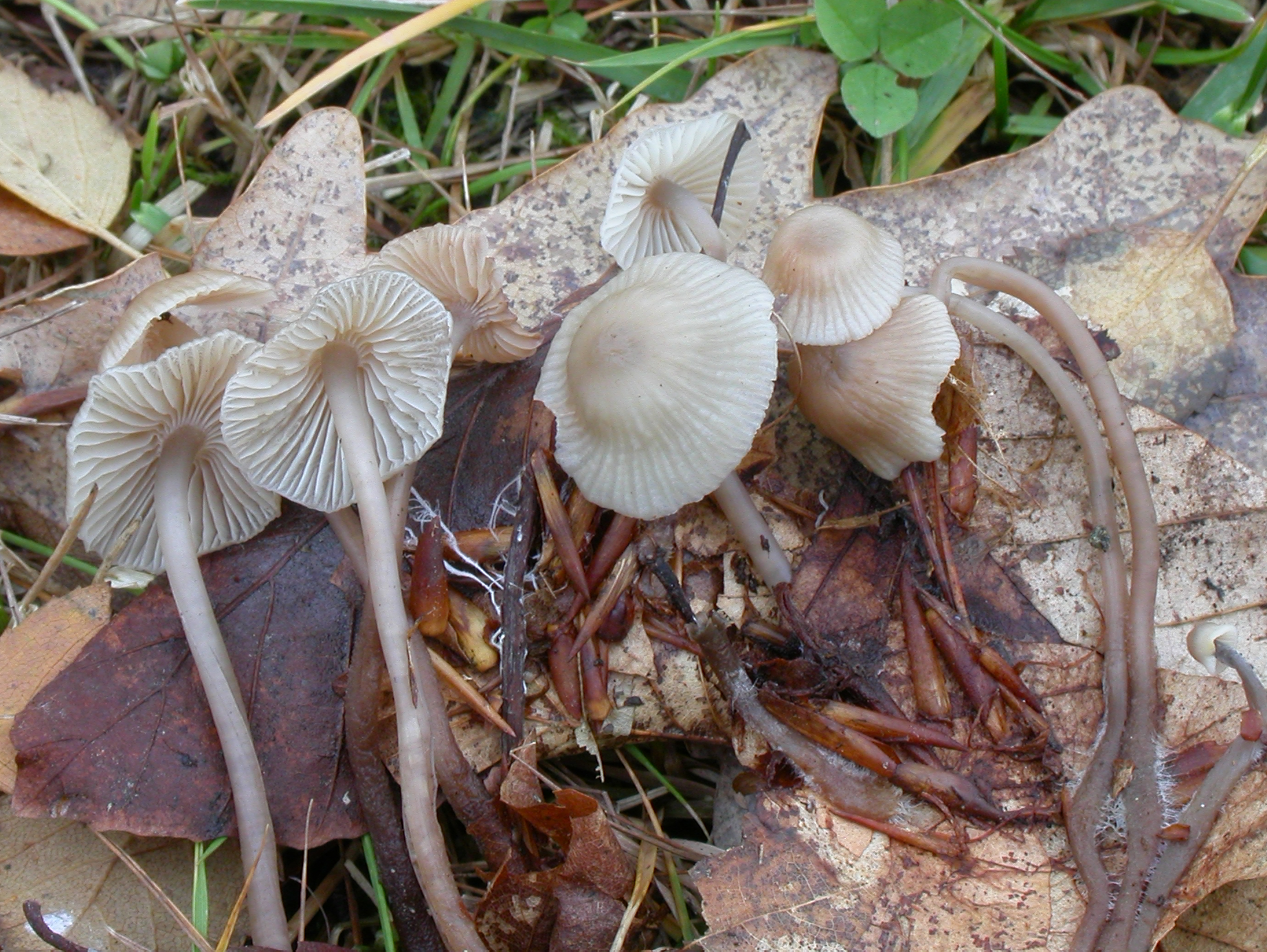Mycena galopus
Mycena galopus
Description
1. Cheilocystidia, 2. Spores, 3. Hypha of the pileipellis, 4. Hyphae of the cortical layer of the stem with terminal cell.
Cap 10-25 mm across, conical to campanulate, more or less umbonate, somewhat flattening with age, the margin sometimes flaring and upturned with age, sulcate, translucent-striate, pruinose, glabrescent, somewhat lubricous, grey, grey-brown to fairly dark sepia brown, darker at the centre, the margin paler. Gills 13-18(-23) reaching the stem, adnexed to adnate, sometimes decurrent with a short tooth, smooth to veined, becoming dorsally intervenose with age, at first whitish, then brownish white to pale grey-brown, edge whitish. Stem 50-85 x 1-3 mm, cylindrical, somewhat elastic, equal or somewhat broadening downward, ± pruinose all over, glabrescent for the greater part, exuding a milk white fluid when incised or broken, grey-brown, paler above, darker below, the base densely covered with long, coarse, white fibrils. Odour earthy, raphanoid or insignificant. Basidia 25-36(-49) x 7-9 µm, clavate, 4-spored, sterigmata 6-8(-12) µm long. Spores 10-14 x 5-6 µm, Q = 1.9-2.6, Qav ˜ 2.1, elongated pip-shaped to almost cylindrical, smooth, amyloid. Cheilocystidia 39-95 x 8-18 µm, occurring mixed with basidia or locally forming a sterile band, generally fusiform but also clavate to obovoid, simple to furcate, more rarely with coarse, lateral or apical excrescences. Pleurocystidia fusiform. Lamellar trama dextrinoid. Hyphae of the pileipellis 1-3.5 µm wide, branched, sparsely to densely covered with excrescences 2-4.5 x 1-2 µm, tending to become somewhat gelatinized. Hyphae of the cortical layer of the stem 1.5-4.5 µm wide, covered with widely spaced to more crowded, simple to furcate excrescences 1.5-10 x 1-2 µm, the terminal cells smooth to diverticulate, up to 4.5 µm wide. Clamps present in all tissues.
Ecology and distribution
Scattered on all kinds of forest litter, also on turf and among Sphagnum. Early summer to autumn. Abundant in the lowlands but also present in alpine Salix thickets.
